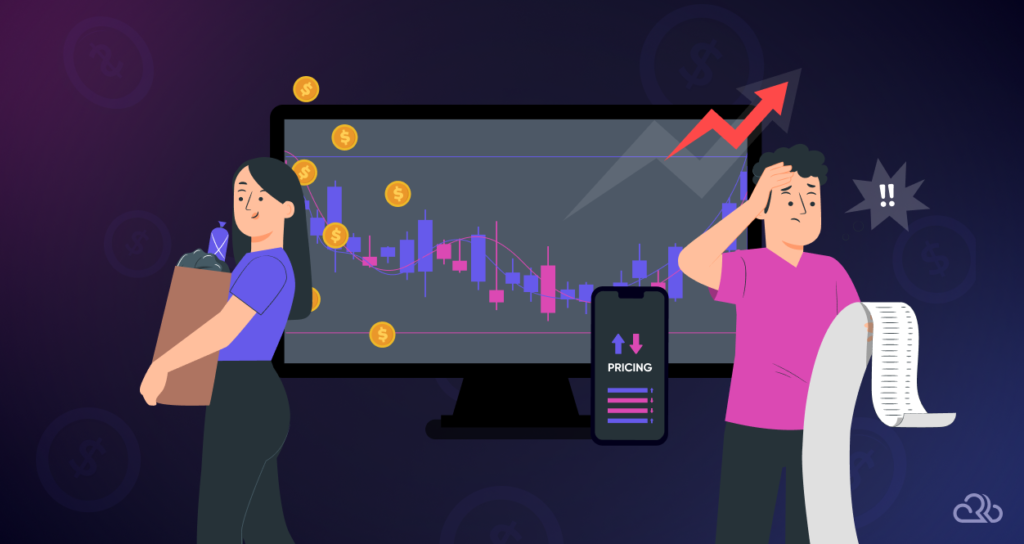


The pricing strategy for your WordPress work can sometimes feel like a guessing game. What if you could crack the code and know exactly what to charge? Most developers working with WordPress typically take home earnings of anywhere between $10,000 to $100,000.
This is the kind that pays the bills and lets you enjoy the extra things in life. To get there, you need to play the pricing game smart.
We will walk through the nuts and bolts of pricing strategies for WordPress projects. By the time you are done with this article, you will be ready to price your WordPress projects with confidence.
Insights Into the WordPress Development Market
The WordPress platform is constantly alive with opportunity. For those in the know, it’s the go-to place for creating websites that click with users and tick all the right boxes for functionality. However, with opportunity comes competition, and to stand out, you need a strategy.
The market for WordPress development is as diverse as the people who use the internet. Some clients need a simple blog to share their thoughts, while others are on the lookout for a robust online store to sell thousands of products.
Your neighbor might want a personal portfolio, and a local business down the street, a snappy landing page. The point? Every project is unique, and so should your pricing.
Most WordPress developers are pulling in impressive figures, but those who truly understand their market can earn even more. They know the price tags that hang off the different types of WordPress projects, and they use that knowledge to their advantage.
It’s about recognizing that a one-size-fits-all pricing model is a relic of the past. The modern WordPress freelancer or agency is nimble and adjusts its sails to the wind of market demand and client budgets.
It’s not just about what others are charging, though. It’s about the value you deliver.
Seasoned pros often command higher fees, because they’ve honed the art of translating that experience into tangible benefits for their clients. Newcomers shouldn’t count themselves out, either. What you lack in years, you can make up for with:
- Passion
- The latest know-how
- A keenness to please
Hourly, Fixed Fee, and Value-Based Model

When you’re in the world of WordPress development, figuring out the best way to charge for your services can make all the difference. There are three main pricing models most developers dance with:
- Hourly rates
- Fixed fees
- Value-based pricing
Let’s break down the beat of each one so you can find your rhythm.
Hourly Rates: Counting Time as Money
Charging by the hour is straightforward. You can set a rate, clock your hours, and invoice for the time spent. It’s great for projects that are hard to predict or when you’re just starting out and learning the ropes of how long tasks can take.
The upside? Every minute you’re working, you’re earning. But there’s a catch: if you become quicker and more efficient, you’ll actually earn less for doing the same job.
Plus, clients can get antsy about open-ended budgets where the ticking clock is the meter running up their bill.
Fixed Fees: The One-Price Hat Trick
A fixed fee means you quote a price upfront for the entire project. Clients love it because it’s predictable, and you can love it too because it rewards efficiency. If you can do the job faster while maintaining quality, you’re effectively giving yourself a raise.
But beware, underestimating the work can lead to long hours for not enough pay. Nail the estimate, though, and it’s smooth sailing.
Value-Based Pricing: The Game Changer
This one flips the script. Instead of pricing based on what you do, value-based pricing looks at the worth of the work to the client. If the new website is going to be a major money-maker for them, your cut reflects that potential.
It requires a deep dive into understanding the client’s business and the impact your work will have. If you align the price with the perceived value, it can lead to higher earnings for you without the client feeling overcharged.
Now, which pricing strategy do you choose? It might be a bit of each. Some projects might call for a meter of hourly rates; others for the simplicity of a fixed fee.
When you can, go for the win-win of value-based pricing. The trick is to know your project, know your client, and, above all, know your worth. Keep these in mind, and you are set to compose pricing that plays the right tune for your WordPress business.
Factors That Dictate WordPress Project Costs
When pricing your WordPress projects, it is important to look at the bigger picture. Each aspect represents a factor that will affect overall costs. While your time is valuable, there are unique elements that you bring to your projects.
Take each factor of your projects into consideration so that you can price your services fairly for yourself and your client.
Scope Complexity: Features and Functionality
Every website is a world unto itself, with some as straightforward as a small town and others as complex as a bustling metropolis. The more features and custom functionalities a project requires, the higher the cost.
Think:
- eCommerce integrations
- Membership systems
- Interactive user interfaces
Sometimes a client needs things done yesterday. When projects come with a rush tag, they also carry a premium price.
Time is a commodity, and like any express service, speed can come at a premium so that you can prioritize someone’s work over other projects.
Client Type: Understanding Who You’re Dancing With
Who’s asking for the website?
- A solo entrepreneur?
- A non-profit?
- A big company?
The size and type of the client can influence the project’s cost. Larger organizations often have more complex needs and deeper pockets, while smaller clients might be working with a tighter budget but offer more creative freedom.
Your Experience: The Price of Wisdom
Your track record and skills play a big part in pricing. If you’ve been building WordPress sites that wow for years, you can, and should, charge for that expertise.
Clients are just not paying for your time but can reap the benefits of the years of learning and projects that got you to where you are, and your prices should reflect that.
Maintenance and Updates: The Road Ahead
Websites, like gardens, need tending to grow. Ongoing maintenance and updates are all part of the post-launch package you can offer.
Clients may not know they need these services yet, but including them can ensure a website’s longevity and your continued relationship with the client.
Align Market Rates With Your Business Goals

The sweet spot of pricing doesn’t only boost your profit; it accelerates it faster than chasing after more projects ever could. It’s the difference between keeping afloat and sailing the high seas of success.
But many shy away from pricing adjustments, worried about walking the plank and losing clients.
A slight improvement in your pricing strategy, as little as 1%, can increase your operating profit by over 11%. That’s a significant boost to your bottom line.
On the other hand, a small misstep in pricing, such as undervaluing your service by 1%, could wash away the same amount of profit. This seesaw effect shows the power of pricing in the WordPress sea of opportunities.
In the WordPress realm, it’s crucial to manage not the price you put on your invoice but the real transaction price. That’s the price that truly sails into your bank account after all the discounts and negotiations.
It’s what you really earn after the haggling is done. This transaction price is where many developers leave money on the table, and with it, the chance to make their business more profitable.
Here’s how you can navigate these waters:
Understand the Currents of Supply and Demand
Grasp the ebbs and flows of the WordPress market. When demand is high, and your type of work is in short supply, you can set sail with higher prices.
But if there’s a storm of competition, you might need to offer more competitive rates.
Map Out Your Product Market Strategy
Know the value you’re bringing to your clients. If your WordPress site is the flagship that’s bringing in the big catches for your clients, your prices should reflect that. Use tools like market research to understand what features clients treasure the most and set your prices accordingly.
Manage Each Transaction With a Spyglass
Zoom in on each deal. Whether it’s the base price, the terms, or the discounts, every piece counts. Align your pricing decisions with the strategic positioning of your services in the market.
So, as you set your compass to navigate the pricing strategies of your WordPress projects, remember that even the most seasoned professionals in the industry adjust their sails to catch the best wind.
Charge too little, and you will have trouble paying the bills. Charge too much, and you might find potential clients passing you up. But get it just right, and you’ll be sailing towards the horizon of success with satisfied clients.
Techniques to Assess and Set Project Prices
It is always a bad idea to pull numbers out of thin air. For each project, it is absolutely crucial that you understand each project’s unique circumstances.
While you can’t predict the future and each situation, you can form a basic formula to refer to when needed. Take a look at how you approach each project with confidence.
In web design and development, a utopian scenario where clients present you with a neatly packaged scope of work is rare. The reality is that clients don’t live and breathe web design or WordPress. They’re masters of their own trades and look to you for this particular project.
As a WordPress expert, your role extends beyond coding and designing; you’re an educator and guide. Your clients depend on you to:
- Show the path through the web design process
- Share insights on content strategy and website strategy
- Place their business objectives at the forefront
- Provide honest and transparent cost estimates upfront
During this discovery, each layer reveals more about the client’s needs and goals, which helps map the terrain of the project.
However, the course isn’t always clear, and unknowns are common.
Often, the full scope of a WordPress project isn’t clear at the outset. Skipping the due diligence phase is risky and potentially costly. Make the discovery phase as integral to your process as the design or development itself.
Beyond initial interviews, schedule deep-dive sessions with your client to extract every detail about what the project needs to achieve.
Accounting for Every Aspect of the Project
It’s easy to focus solely on the time you’ll spend coding or designing when estimating project costs. However, this narrow view can lead to underpricing, as it often fails to account for the myriad of other tasks that are critical to the project’s success, such as:
- Client communication
- Project management
- Unforeseen challenges
Adopt a holistic approach to your pricing strategy. Develop a comprehensive pricing model that includes all facets of project execution.
Base Your Price on Value, Not Fear
The temptation to lower your prices to match or undercut the competition is common, especially when you’re eager to secure a new project. However, this ‘should be’ pricing strategy, driven by fear rather than data, can lead to significant underestimations that undermine your business’s financial health.
Let the distinct value and expertise you bring to each project guide your pricing decisions. Compete on the quality and unique solutions you provide, not just on cost.
Educate your clients about the benefits and value of your work and how these justify your pricing. When clients understand the rationale behind your fees, they’re more likely to perceive the cost as a reflection of your worth and the tangible benefits they will gain, rather than just a number.
How Pricing Influences Client Choices and Expectations

Your pricing often gives the first impression of your quality and service level. High prices might suggest top-quality service and attract clients who don’t mind paying more for better results.
On the other hand, lower prices may appeal to those on a budget but could also make some people wonder if the quality might be lower.
It’s important that your price matches what you offer. If there’s a mismatch, clients might feel let down, and this can hurt your reputation.
Be clear about what each price level includes to avoid confusion and make sure clients know what they’re getting. If your services are priced higher, explain why this is and what extra benefits you provide, like faster service or more personalized work.
How you set your prices can make clients think differently about the quality of your services. If prices are too low, people might doubt the quality; if they’re too high, they might expect more than you can deliver.
To manage expectations, use real examples like client feedback and project outcomes to show the value you bring.
As your skills and business grow, your prices will likely need to change. Review and adjust your prices to keep up with your experience, changes in market demand, or your costs. Be open with your clients about any price changes and why they are needed.
How to Enhance Your WordPress Offerings
If you are looking to find ways to increase your earnings, a good way to make your services stand out is by adding more value for your clients.
Clients usually need more than just a basic website. They’re looking for solutions that tackle their specific problems and help them meet their goals.
For example, you can help their sites show up better in search results with SEO optimization, or make sure their sites are safe with enhanced security features. Another big help is making sure their website loads quickly and runs smoothly, which is essential for keeping visitors happy and improving the site’s rank on search engines.
Each client is unique, and customizing your services to address their specific challenges can really make you stand out. If you specialize in certain areas, like creating online stores for retailers or crafting portfolios for artists, you can offer solutions that are specifically designed for those fields.
You can also design custom plugins or themes that add special features or styles they don’t have with standard options.
Clients really appreciate it when you help them get better at managing their own website. You can offer training sessions on how to use WordPress and how to handle their content and understand their site analytics.
Identify Opportunities to Elevate Your Pricing
As time moves on, you will see the need to increase your pricing. There are a number of reasons why this might be the case, but not all of them will sit well with your clients.
It is a delicate act to balance, but the “when” and “how” can make all the difference.
Know When to Raise Your Rates
One key to deciding when to raise your rates is looking at your own growth and changes in the market. If you’ve been adding new skills or services that help your clients get more visitors or make their sites easier to use, that’s adding value. Your prices should reflect that.
Also, if other developers with your skills are charging more, it might be time to think about your own rates. This keeps you competitive and ensures you’re not selling yourself short.
Another thing to consider is how your clients see your work. Are they thrilled with what you’re delivering? If you consistently get feedback that your work is top-notch, that’s a sign that your clients see value in what you do, which might mean you can afford to ask for more.
How to Talk About Price Increases With Your Clients
Telling your clients about a price increase is all about preparation and transparency.
Start by giving your clients plenty of heads-up before the new prices kick in. This respects their need to budget and shows you’re thoughtful about their business needs.
Be clear and honest about why your rates are going up. Maybe it’s because you’ve learned new technologies that make your sites better, or perhaps the costs of running your business have increased. Whatever the reason, explain it plainly. This helps your clients understand that the price increase is fair and based on real changes in what you offer.
It’s also good to talk about what your clients will gain from the new pricing. The higher rates may come with:
- Faster turnaround times
- Additional features
- More personalized service
Success Stories for Effective Pricing Strategies

There are many examples we can pull to see which pricing strategy works best for you. However, each situation is unique, so look at them with an open mind and don’t be afraid to mix and match.
For example, Apple is famous for its value-based pricing. While priced higher than their competitors, they market their brand on a guarantee of superior design and quality.
Another example is Uber’s demand-based pricing. During rush hour and other busy times of the day, they increase their price.
The Right Tools for Efficient Pricing and Management
Having the right tools is half the job. It is a sentiment often used in construction, but it rings true in WordPress development as well.
These tools can lighten the load, but do not underestimate the value of your personal knowledge and skills. Use these tools to track your data and automate some of your admin work. However, remain diligent in every aspect of your business to decrease the likelihood of errors.
WordPress Projects: Elevate Your Earnings Today
The first step to choosing the right strategy is to understand the value of your WordPress projects. As soon as you know that crucial factor, you can set fair prices for both you and your client.
Are you looking for specialized cloud hosting? Rapyd offers the speed, scalability, and support necessary to elevate your digital presence. We understand that each site is unique and we cater to our services as such.







